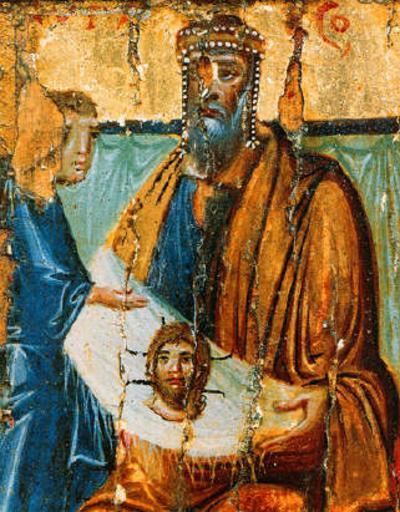MAKE A MEME
View Large Image

| View Original: | Abgarwithimageofedessa10thcentury.jpg (321x411) | |||
| Download: | Original | Medium | Small | Thumb |
| Courtesy of: | commons.wikimedia.org | More Like This | ||
| Keywords: Abgarwithimageofedessa10thcentury.jpg Abgar with the Image of Edessa Photo of 10th century icon at St Catherine's monastery Mount Sinai This is a wing of a triptych the missing central panel of which presumably showed the Image Abgar resembles portraits of Emperor Constantine VII Porphyrogenitus in whose reign the Image was brought to Constantinople in 944; the icon probably dates to soon after this It is the earliest surviving representation of the Image or Mandylion Most icons of the Image of Edessa show a square cloth containing only the face of Jesus while this 10th century image shows an oblong cloth Some have suggested that the artist may have seen the Shroud of Turin however there is no continuous historical record of it before the 14th century There are rather historical references and artist depictions prior to the 14th century that indicate that the Shroud of Turin and the Image of Edessa are the same This includes desciptions of the Image of Edessa that match the Shroud of Turin Bishop of Constantanople sermon ca 944 commentary by Ordericus Vitalis in 1130 that the Image was a body of the Lord research that matches the facial image of the Shroud of Turin to coinage depicting the Image of Edessa etc In addition research by John Jackson about folds discovered during the STURP investigation indicated that fold marks in the Shroud of Turin demonstrated that the cloth had been folded in a manner that only revealed its face thereby demonstrating that the Shroud of Turin had been folded in a manner that would have been required to display the face only as in the Image of Edessa JimfromGTA <span class signature-talk >talk</span> 17 07 12 November 2011 UTC PD-old 10th-century paintings Abgar Mandylion Icons from Saint Catherine's Monastery Mount Sinai Thaddeus of Edessa Abgar V | ||||